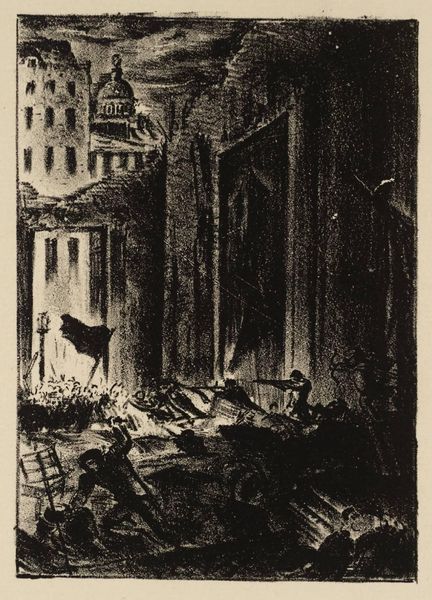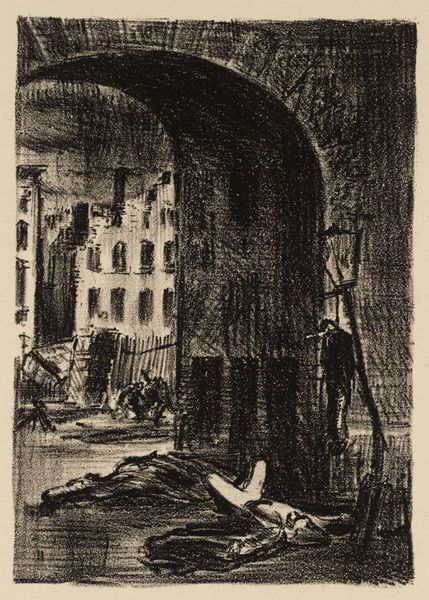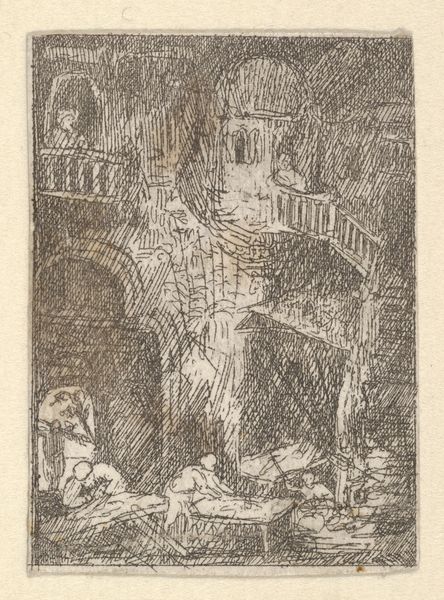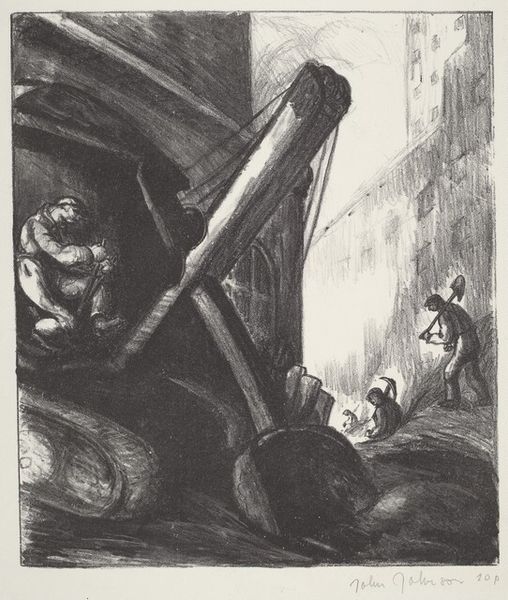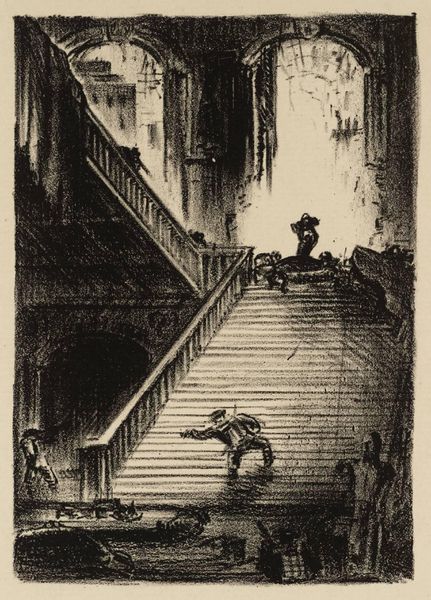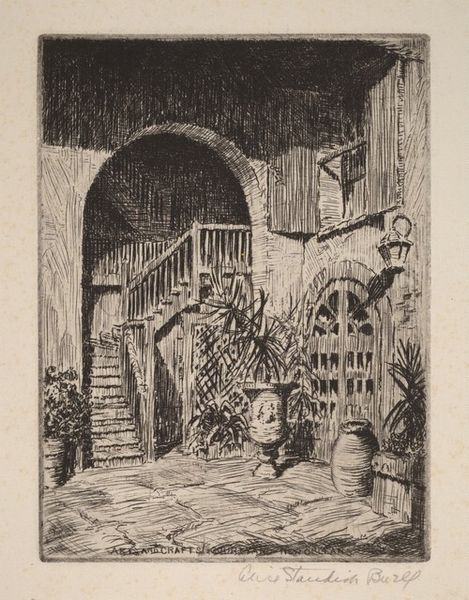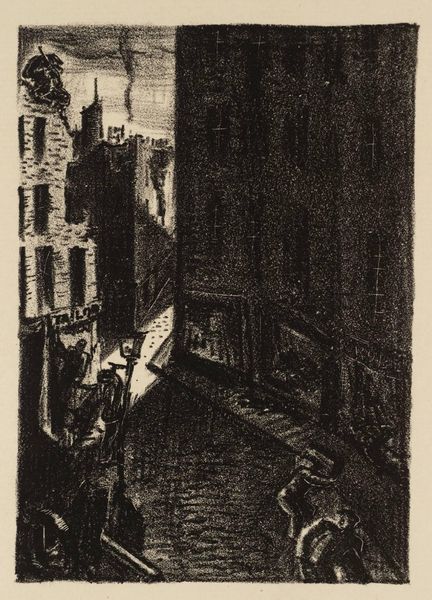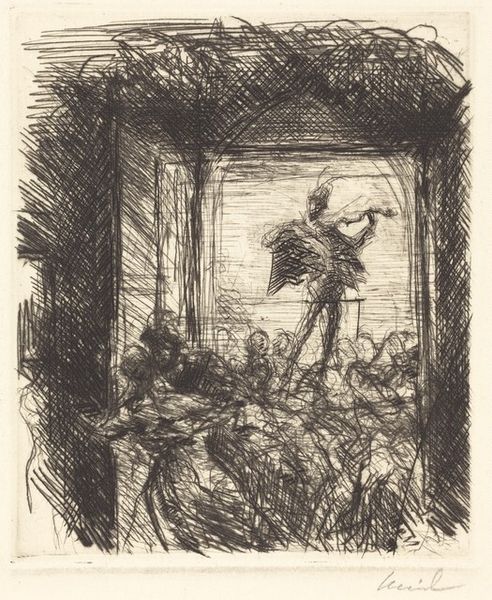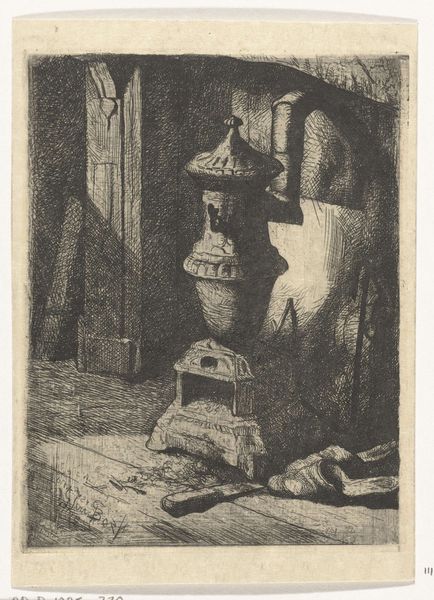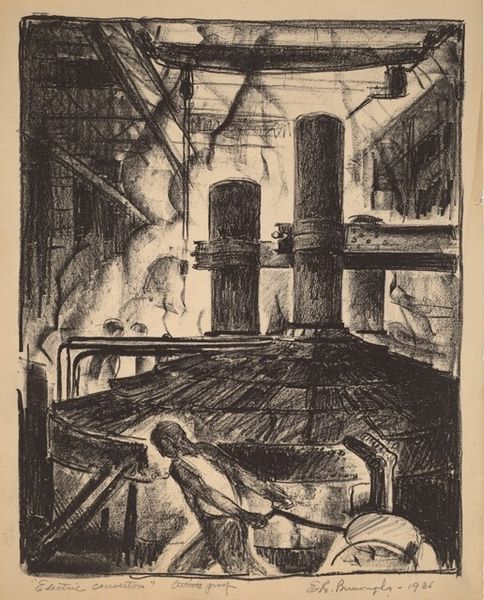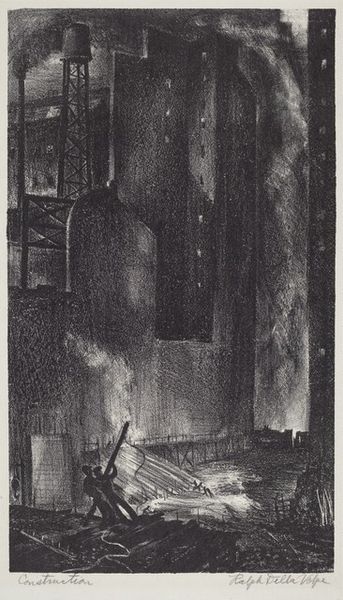
Dimensions: image: 133 x 95 mm
Copyright: © The estate of James Boswell | CC-BY-NC-ND 4.0 DEED, Photo: Tate
Editor: This is James Boswell's print, "The Fall of London: Corner House." The sharp contrast really gives it this feeling of stark devastation, almost a dreamscape after some huge calamity. What do you make of it? Curator: It whispers to me of resilience, strangely. All those sharp angles, the brutal blacks, like charred memories, but there's a figure hunched there, a tiny spark of life amidst the ruin. Do you feel that? Editor: I do. Maybe it's hope after all? Curator: Or maybe stubbornness. It might be the same thing, wouldn't you say? I learned to appreciate the simple narrative. Editor: Definitely something to think about.
Comments
tate 7 months ago
⋮
http://www.tate.org.uk/art/artworks/boswell-the-fall-of-london-corner-house-p11654
Join the conversation
Join millions of artists and users on Artera today and experience the ultimate creative platform.
tate 7 months ago
⋮
Corner House is one of a series of eight small lithographs describing The Fall of London. Ron Heisler believes that they were originally conceived for a book by Frank McIlraith and Roy Connolly called Invasion From The Air which describes a Fascist invasion of England (information from Ron Heisler, August 2003). The theme of the book, which was published in 1934, is reminiscent of Boswell’s prints, which illustrate both popular uprisings in the City of London and horrific scenes of the city in ruins. In this unnerving image Boswell captures the city by night when the streets are empty. The only signs of life come from the tall smoking chimney in the background and the sinister looking figure with a knapsack on his back walking past the crooked streetlamp and crumbling buildings. He carries a large gun which may have been used on the victim whose legs hang awkwardly from the rubbish tip in the foreground. The title refers to the building on the right which has been destroyed.
